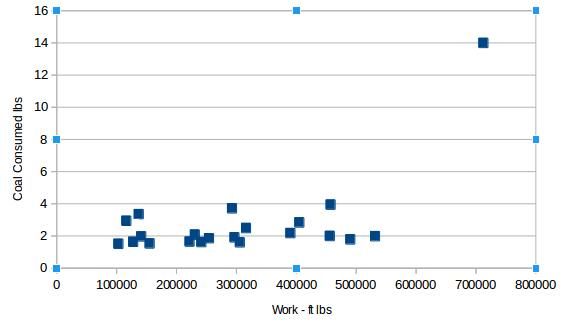Hi Duncan,
A most interesting discussion.
The pure drawbar pull is not a factor of just the weight pulled (number of passengers plus weight of passenger trolleys, and the dynamometer car – which is really quite heavy and I reckon equal to carrying 1 or 2 extra passengers). The number of passengers, as has been commented previously, is really a red herring.
A canny driver will request the numbers of passenger trolleys and the number of passengers on each, and whether adults, children, and perhaps no 'large' adults.
The driver is not allowed to touch the brake unless in an emergency for obvious reasons. If he is going too fast, the Observer watching the dynometer readings will warn the driver. If the driver ignores, then disqualification can result.
I have mentioned previously that the best way to get a decent near constant drawbar pull is to pull on the uphill gradients slowly, and then keep pulling down the downhill sections. This also optimises the steaming rate as a constant, and is line with Sam Ell's work at Swindon, and also the best bit of advice re IMLEC that came from Laurie Lawrence.
So many factors affect drawbar pull – as others have mentioned. Drag on curves, quality of the passenger trolleys, behaviour of the passengers etc. A heavily loaded passenger trolley may cause the bogies not to swivel easily on curves creating a great deal of extra friction.
One has to take a view on grate size. A larger grate requires more coal used to get it into a fit state ready for the run. More coal left on the large grate at the end of the run therefore cancels this out. The 30 minute run should be sufficiently long for the coal consumption figures to be reasonably accurate. There is a proviso to this – most drivers will run the fire down very low on the last two laps. This requires a great deal of confidence and skill to avoid a disaster on the last laps.
There are lots of examples of the same design of loco producing wildly differing results in the hands of different drivers.
Cheers,
Julian
Phil Barber.








